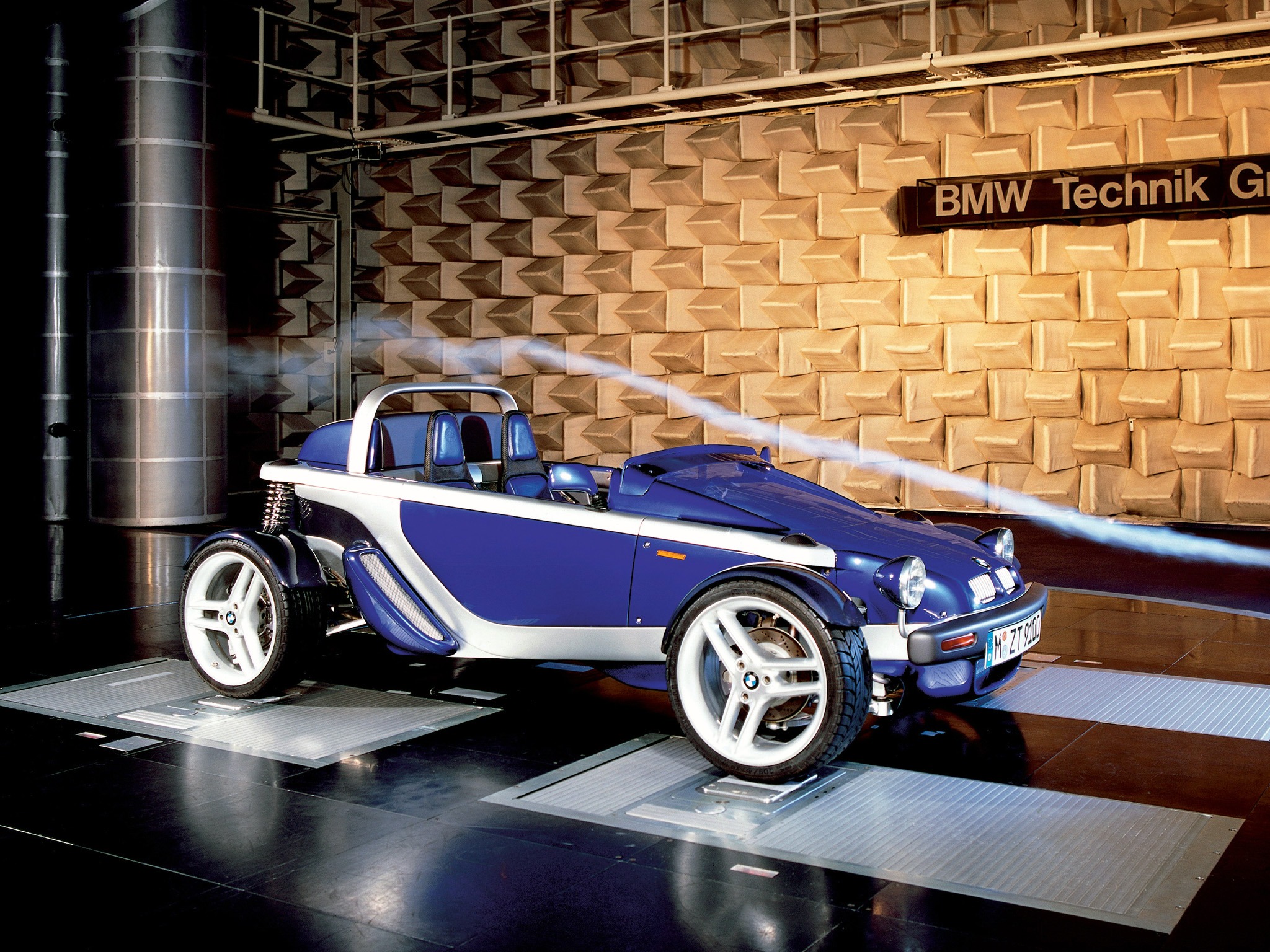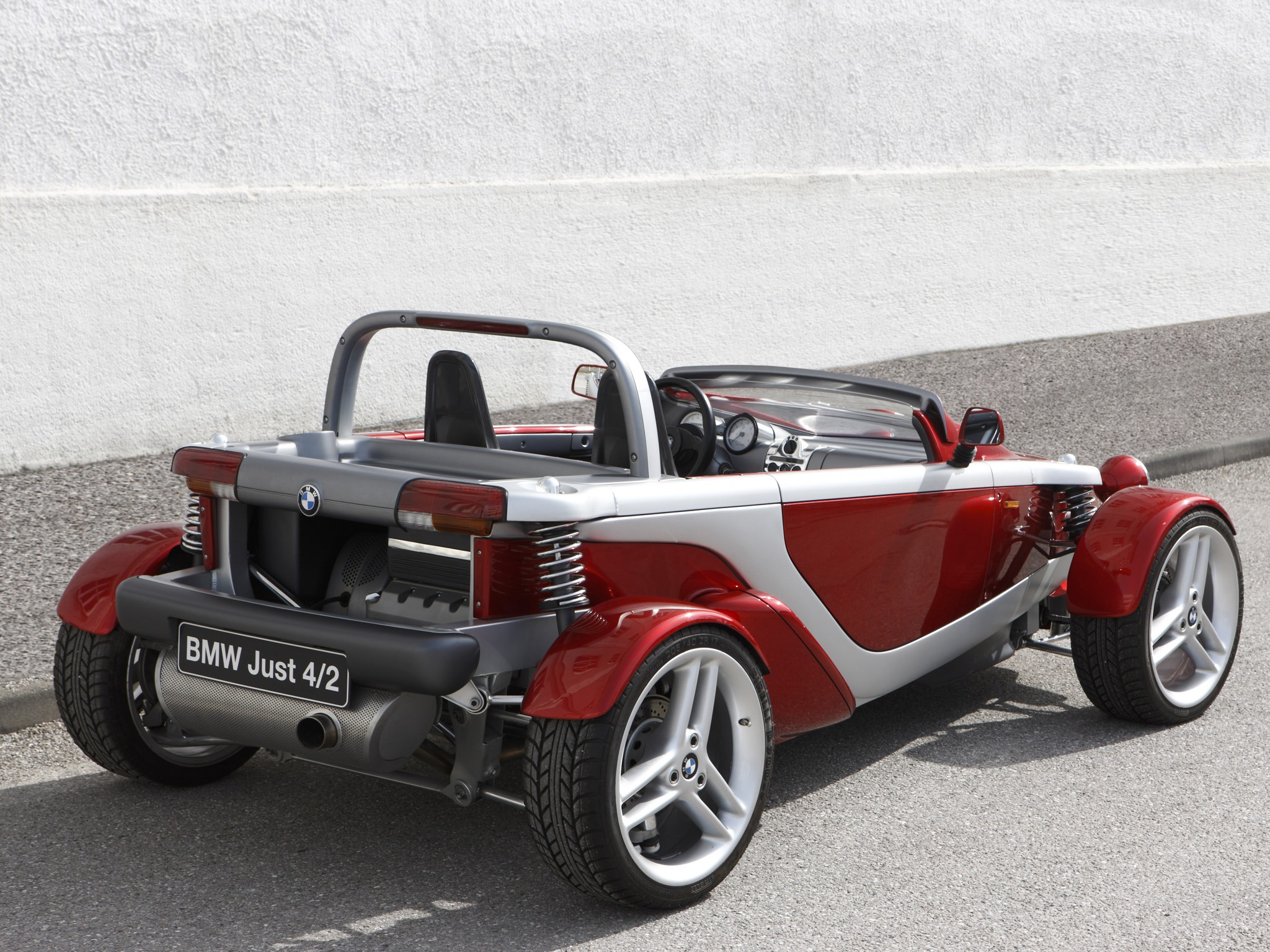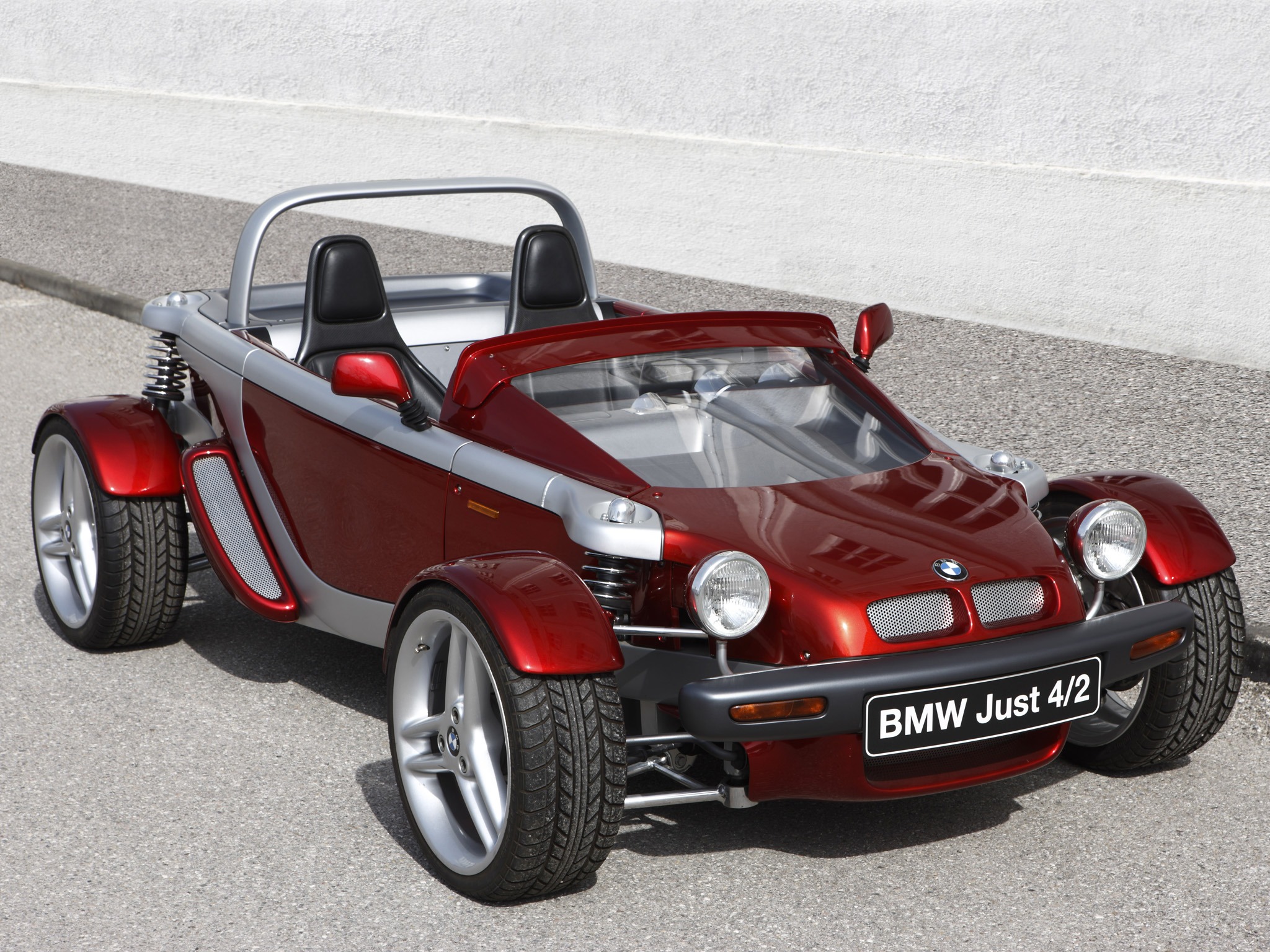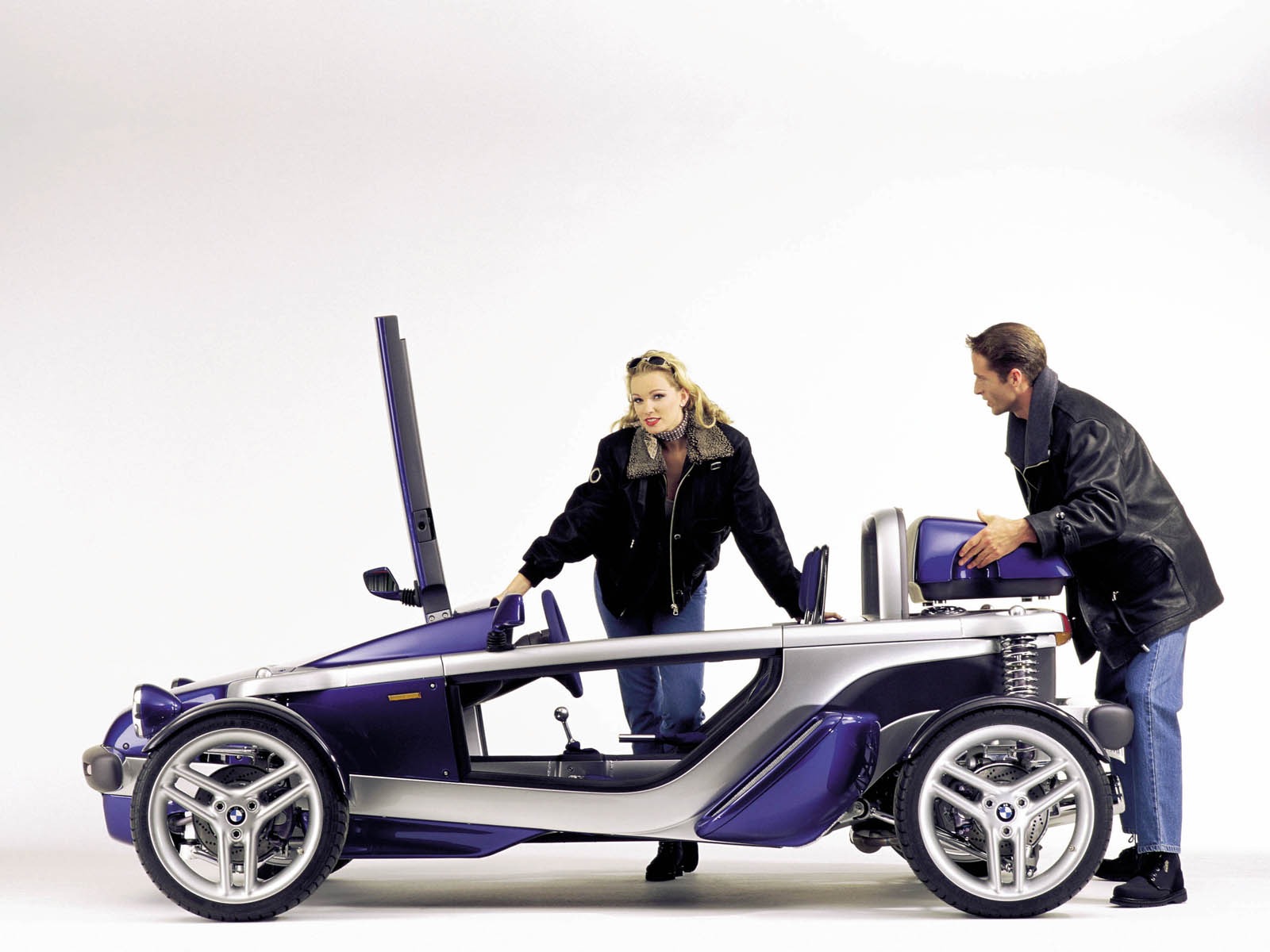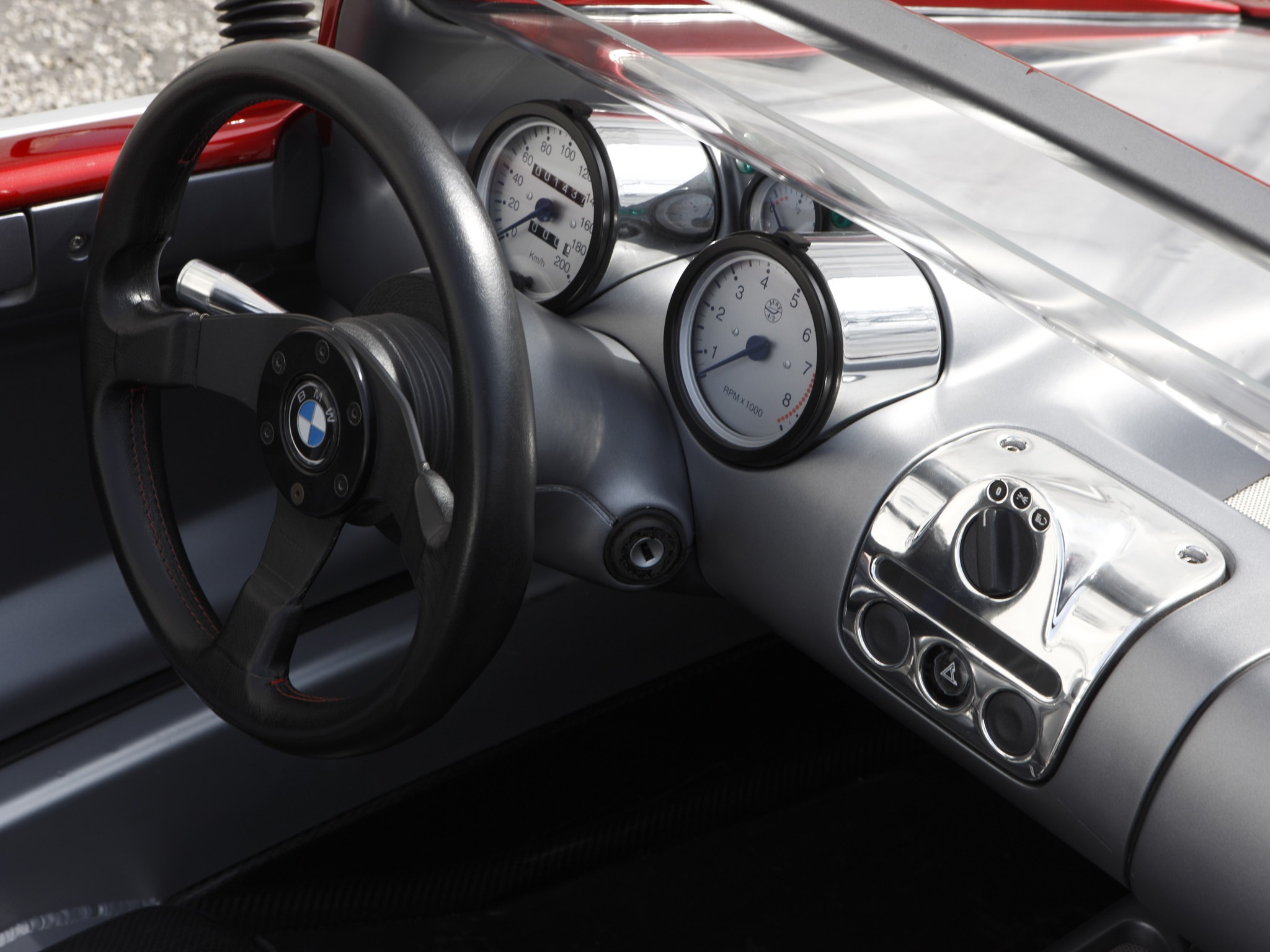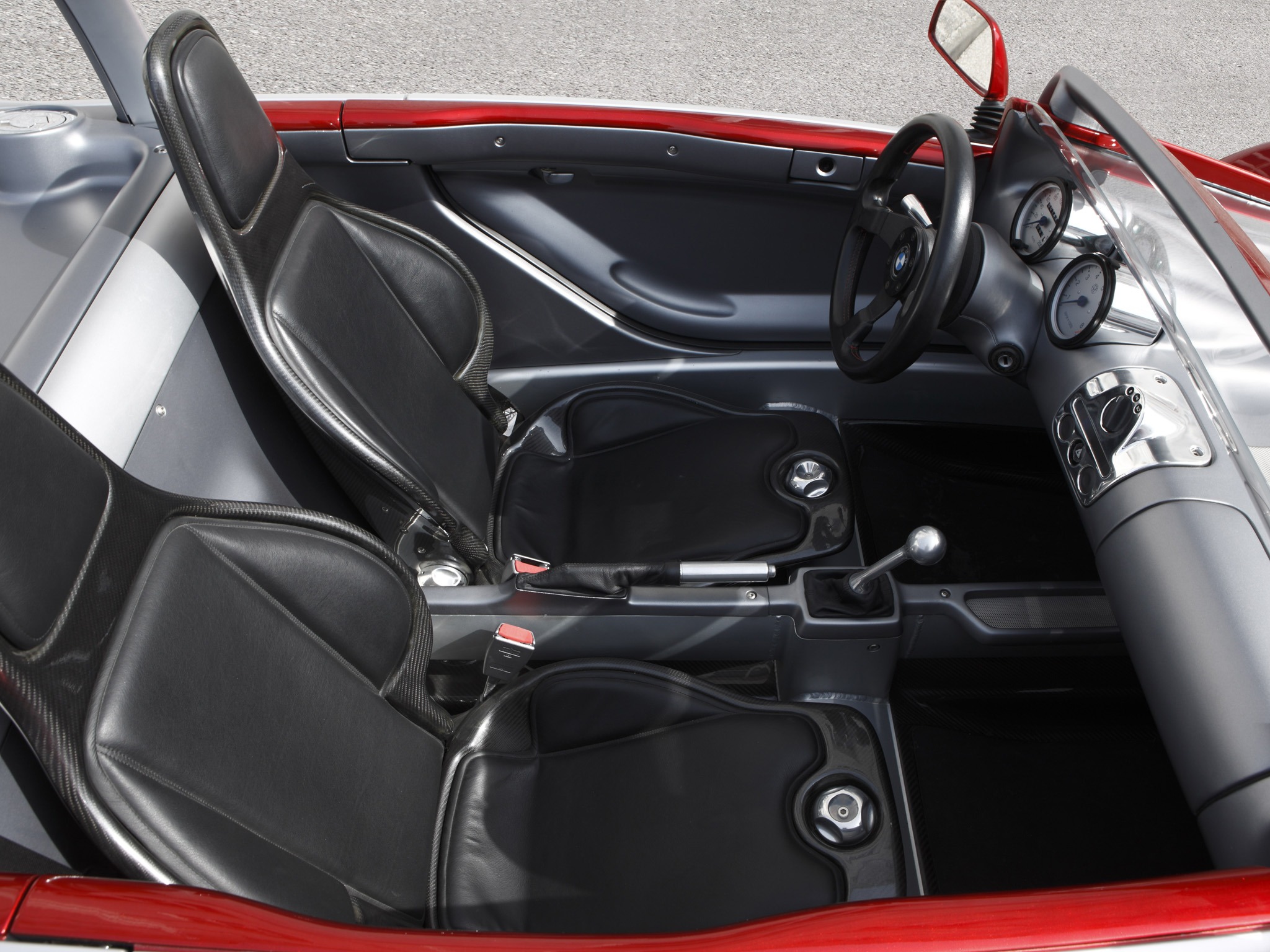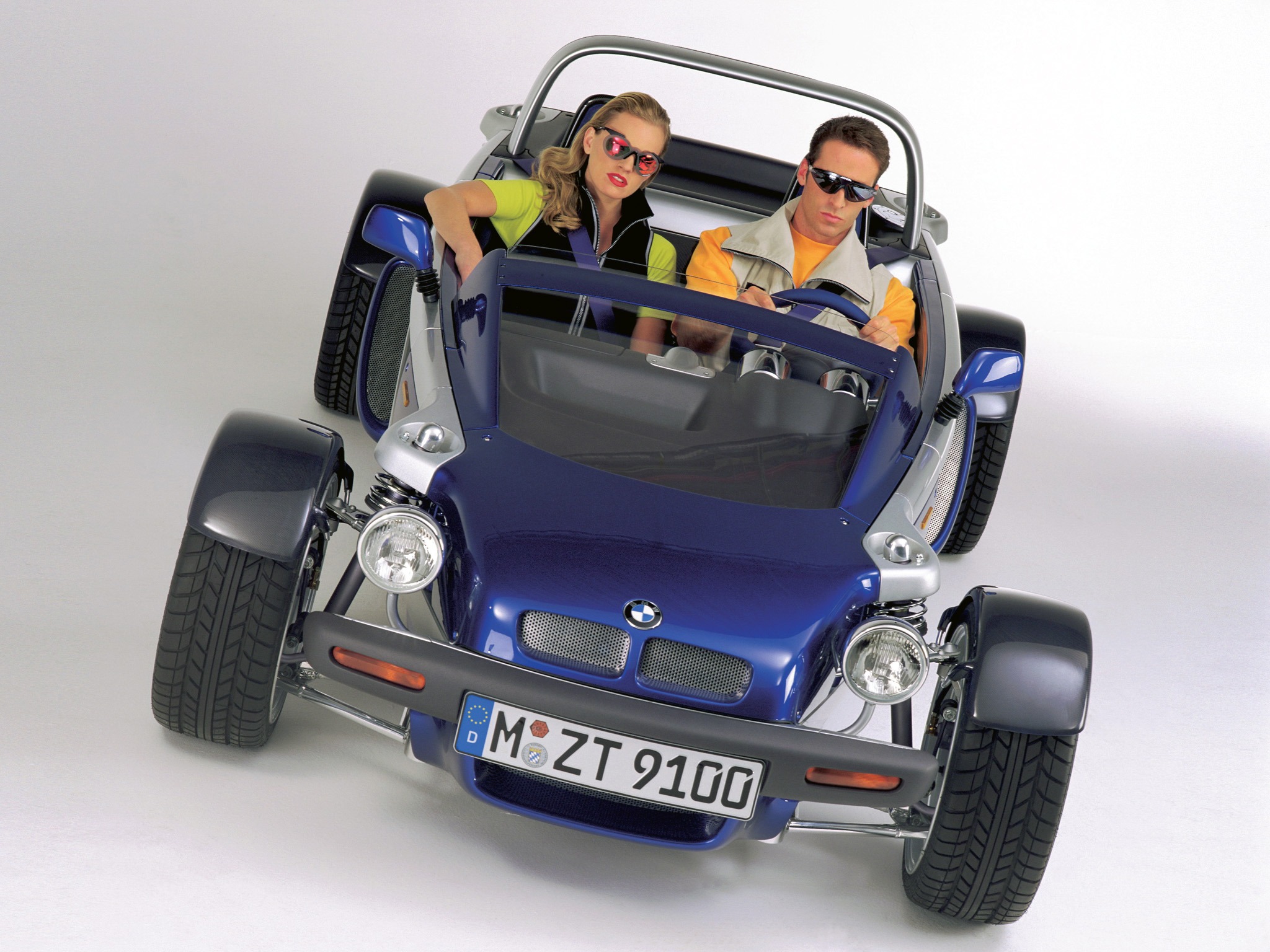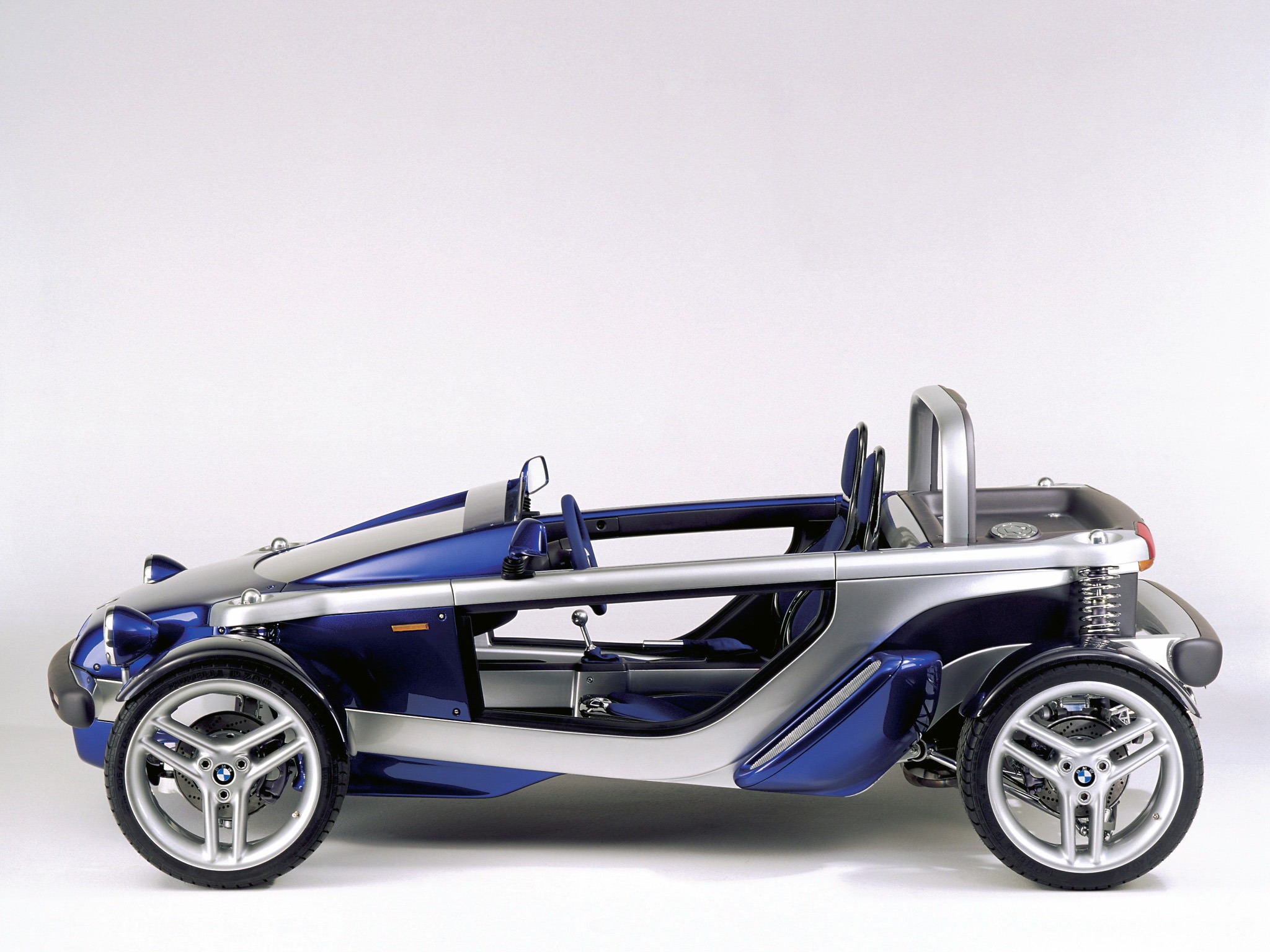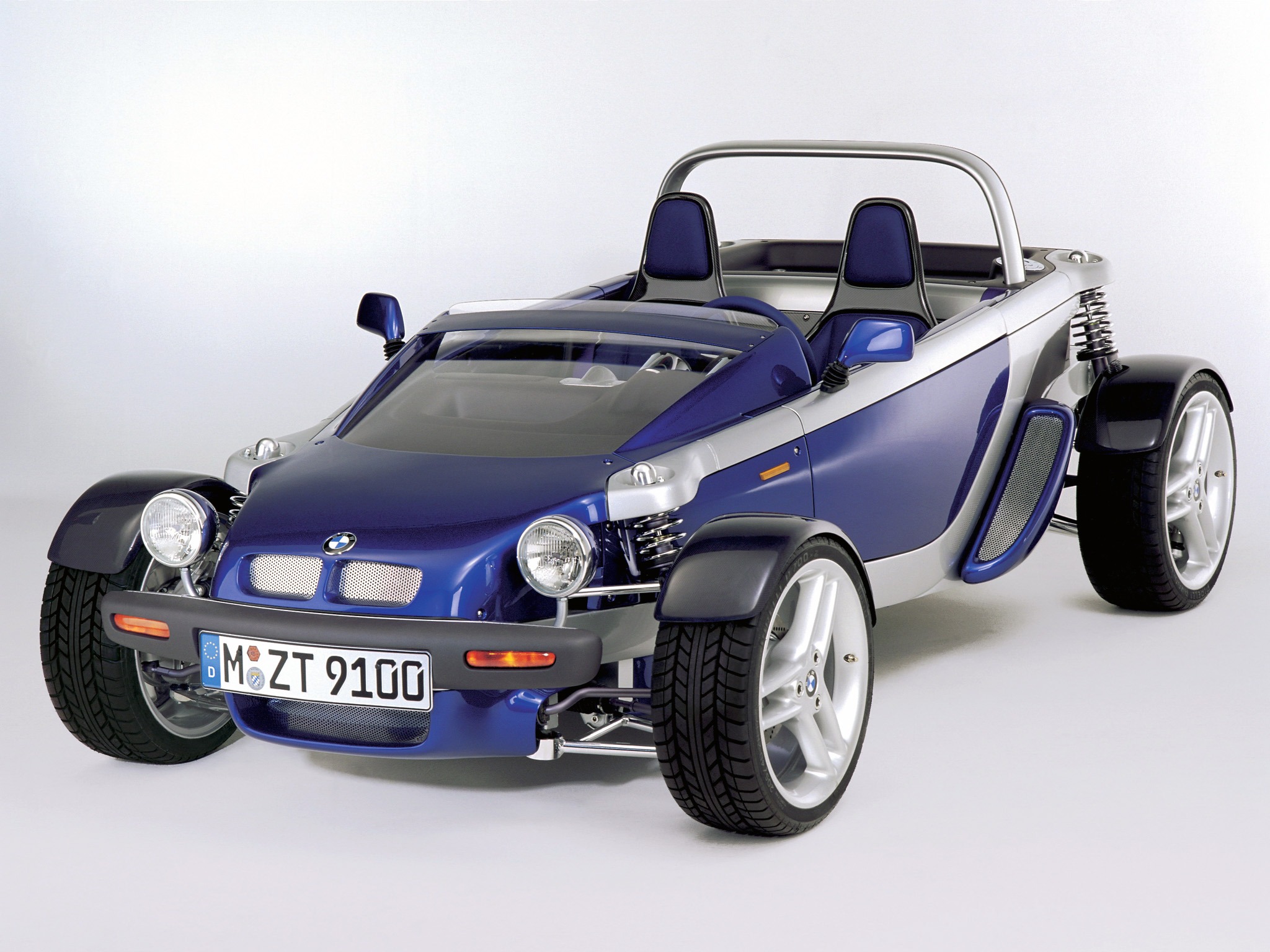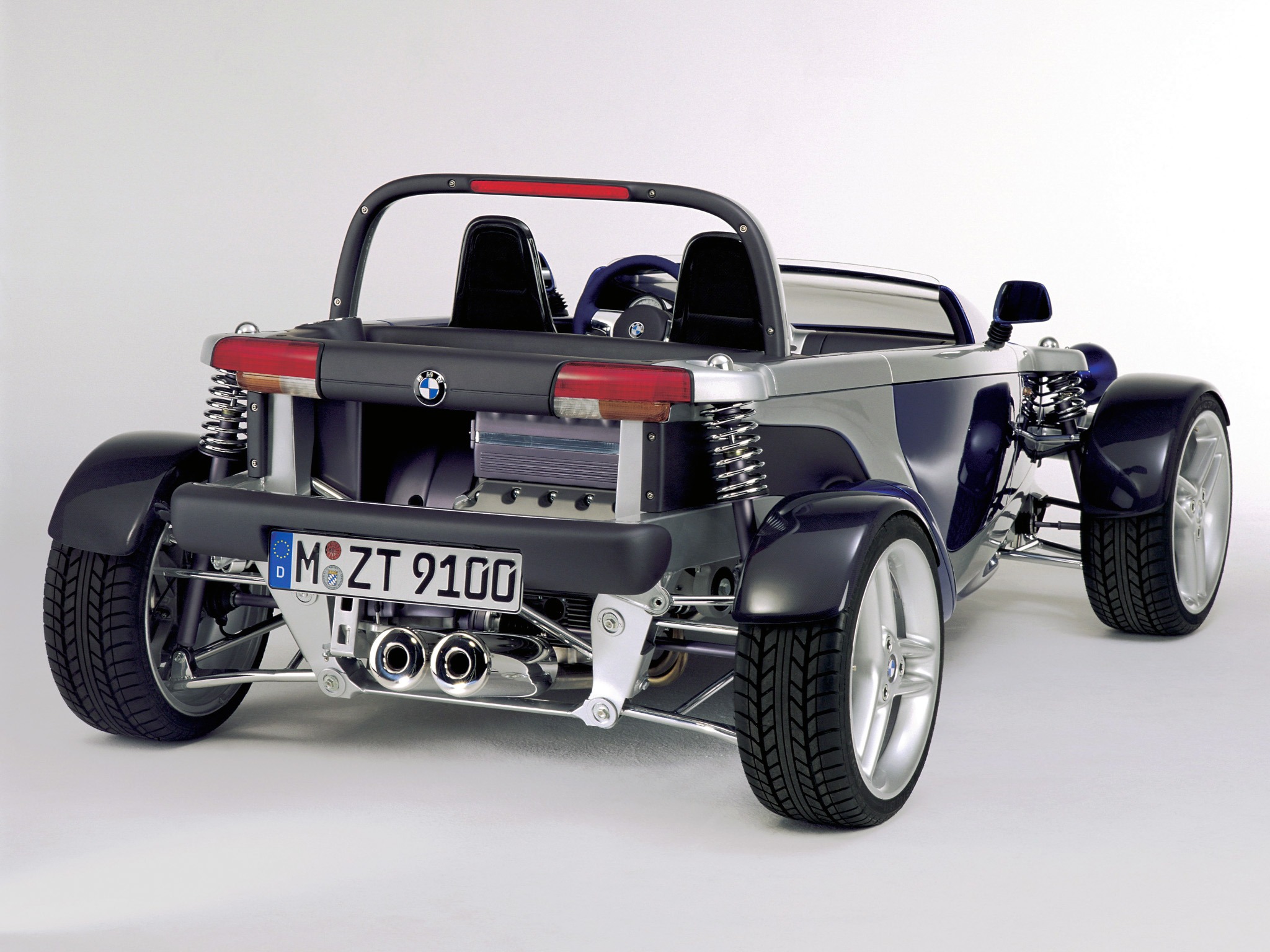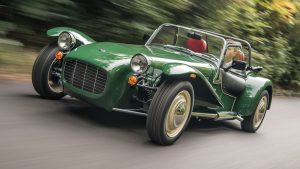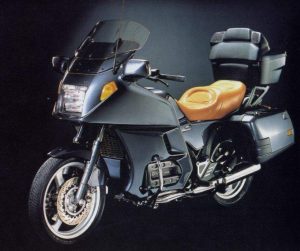Before it began producing cars in 1928, BMW built motorcycles and it still does so today. It was, therefore, wholly appropriate that Just 4/2, which it exhibited at the 1995 Tokyo Motor Show, was a combination of these two concepts and with leanings towards two wheels rather than four!
This audacious rear-engined two-seater lacked the usual niceties of doors and weather protection and was clearly not for the fainted hearted. It was the work of BMW’s M-Technik think tank and, in particular, 41 year old Robert Powell.
Just for Who?
The instrument panel was, inevitably, basic. The knurled wheels in the foreground were for adjusting the position of the lightweight carbo-fibre seats. The seats were lined with a thin layer of foam and incorporated tilting backs.
Just 4/2 was built as the result of an internal corporate competition and it particularly impressed BMW’s technical director, Wolfgang Reitzle. Today he is chairman of the company’s Rover subsidiary which originally sponsored Powell at he Royal College of Art.
Powell’s inspiration was a no-frills car like the Caterham Seven. The project took about a year to complete, approval having been given in the autumn of 1994. It went through the obligatory development process under the watchful eye of Technik’s supremo, Mario Theissen, and involved 100 engineers throughout the company.
The design process was similar to that applied to BMW’s mainstream models, so a clay model was initially produced and there followed computer work and crash simulation. The vehicle itself took a mere, but hectic, 12 week to assemble.
Aluminium Spaceframe
Just 4/2’s spaceframe used no less than 20 different types of aluminium extrusion. Although a BMW K1100 motorcycle engine was employed, the gearbox was a car unit which provided a reverse gear. The all-independent suspension was exposed to view and, accordingly, polished. Lights, wings and bumpers were all street legal.
Just 4/2 was built up around an aluminium spaceframe chassis. The power unit, courtesy of BMW’s K1100 motorcycle, was a 1.1 litre, 16-vavle, four-cylinder unit that was mounted transversely at the rear. If the car’s occupants were unwise enough to bring any belongings with them, these could be stored in a bin mounted on top of the engine.
All-independent strut suspension was employed front and rear while the disk brakes were courtesy of BMW’s prestigious M3 model. Their presence was all too apparent because of the adoption of wide-spaced, handsome three-spoked alloy wheels.
Body panels, such as they were, were removable and made of Kevlar which is a carbon-fibre material. This was also used for the seat backs. The squabs incorporated a novel form of fore and aft adjustment.
Lightweight
Is it a car or a motorcycle? Although this was a futuristic concept, there could be little doubt that Just 4/2 was a BMW. The radiator and battery were crammed into the nose. Top speed was in excess of 177 km/h (110 mph) and acceleration shattering.
With essentials pared to the absolute minimum, Just 4/2 turned the scales at a mere 550 kg (1212 lb). This helped it to reach 100 km/h (62 mph) in just six seconds.
BMW was sufficiently encouraged by its reception at Tokyo to begin a test programme. This does not necessarily mean that a Just 4/2 production model is likely, but the company was sufficiently interested in the concept to start work on a second version that was completed at the end of 1995.
Wood, Jonathan (1997) Concept Cars, Paragon, ISBN 0-75252-084-9.

